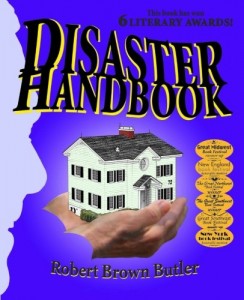
Robert Brown Butler
5.0 out of 5 stars Six-Star Gold Nugget — a Life-Saving, Property-Saving Keeper, January 27, 2015
Way beyond my expectations, this book is a six-star instant classic that is not only essential for anyone that wants to be thoughtful about being prepared and investing a penny now to save thousands later, but it is a great gift item as well. I am rating this a 6 star book, in my top ten percent across the 2000+ plus non-fiction books I have reviewed here at Amazon.
On my first reading, three aspects of this book jumped out at me: common sense, magnificent graphics and illustrations, and lots of stuff I did not know — fireplace ashes still releasing carbon monoxide, real risk of a mobile home or eighteen-wheeler being dropped on your home in a tornado, importance of having an inside hose outlet (as easy as a threaded insert to your kitchen sink), utility of a smoke detector in the attic and a carbon dioxide alarm in the garage (we have neither). Bottom line is that I am blown away.
This may be the most practical useful book I now own or have ever owned, as tempted as I might be to recall the Boy Scout Handbook and my offshore sailing first-aid book, Advanced First Aid Afloat. It is spectacularly well-organized into Well Before, Days Before, Just Before, Suddenly, During, Just After, and Well After.
The serious reader will need to schedule time to actually “do” what this book calls for, in three steps:
01 Collect information — emergency contacts, relevant locations, etcetera.
02 Buy and store long-term supplies and equipment and for specific looming emergencies, short-term supplies.
03 Instal specific recommended items (alarms, internal hose, etc.) and build the strong room.
It certainly merits comment that the author is an architect with engineering and environmental experience; he has written a number of other books useful to professionals, and the book has won numerous literary awards.
On my second pass I learned still more, and will note that the author also covers preparedness and response for biological, chemical, and nuclear accidents. I would stress, as Charles Perrow does so well in The Next Catastrophe: Reducing Our Vulnerabilities to Natural, Industrial, and Terrorist Disasters and his earlier book, Normal Accidents: Living with High-Risk Technologies, we are our own worst enemies. There is a massive chlorine tank about the New Jersey turnpike, if it ever catches fire, hundreds of thousands will be grieviously affected.
This is a hugely impressive book, very ably put together, readable, illustrated, everything you need to double or triple your preparedness and your ability to protect and comfort your loved ones beyond your present state of preparedness.



